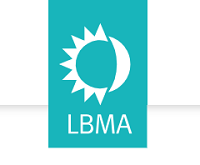Fed Playing Politics with 2024 Rate Cuts?
Victory declared on inflation...
The FED just declared victory over inflation, writes Brian Maher in The Daily Reckoning.
"While participants do not view it as likely to be appropriate to raise interest rates further, neither do they want to take the possibility off the table."
Thus Powell issued his wink and his nod to Wall Street on Wednesday.
His statement followed the December confabulation of the Federal Reserve's Open Market Committee – so-called.
Wall Street heard only the first component of his statement. Stocks were up and away before he could complete the second.
The Dow Jones Industrial Average skyshot nearly 500 points higher. For the first instance ever...the index breached 37,000.
Both S&P 500 and Nasdaq Composite enjoyed similar days at the races.
All three indexes then shed some steam, but rising bond prices mean yields on the bellwether 10-year Treasury note are in swift retreat.
4.28% on Monday, three days later, yields withdrew to 3.93%.
And gold – if you can believe it – thundered $53 higher on the day.
Why? Like the stock market, gold evidently heard Powell's statement. It believes the Federal Reserve is through. Its rate hike cycle is ended.
And like Wall Street, gold has noted the Federal Reserve's "dot plot". That is the Federal Reserve's own divinations of the interest rate trajectory. It reveals that Federal Reserve officials anticipate three rate cuts next year – and an additional four in 2025.
Today's 5.25-5.50% target rate would plunge to 3.5-3.75%. So we must assume the Federal Reserve expects inflation to retreat to the identical range. Thus Powell and mates would attain their cherished "neutral rate".
That is the elusive rate that neither pushes nor pulls the economy. Hence, "neutral".
Does the dot plot provide a reliable tour of the future? It does not. Notes Jim Rickards:
"The dots are meaningless and are regarded as a joke around Fed headquarters in Washington."
Yet as Jim further notes, markets take them quite heavily:
"Wall Street analysts and mainstream media focus obsessively on the dots like ancient seers sifting through the entrails of a slaughtered goat."
In these entrails markets have discovered the portents they seek. These of course are rate cuts.
Thus the joy on Wall Street – and in the London bullion market. Yet a question presents itself: Why does the Federal Reserve anticipate three rate reductions next year? And four more the year after?
After all...despite its rate hike crusade...unemployment gutters at 3.7% – handsome!
Meantime, the gross domestic product expanded 5.2% in the year's third quarter.
At least, that is, in the official telling. We are not half so convinced it is true.
Yet the Federal Reserve believes it. And it conducts itself accordingly. Its Atlanta outpost presently projects a 2.6% fourth-quarter expansion.
2.6% growth is not 5.2% growth. Yet it is growth. And growth is growth.
In brief, data indicates the United States economy is pushing along at fair speed. It has withstood the Federal Reserve's gales blowing in over the bow.
So again we ask: Why does the Federal Reserve anticipate seven rate reductions through 2025?
Perhaps heavy weather has appeared upon its radar screen?
Economic performance lags in back of monetary policy. It is often 18 months behind. The Federal Reserve commenced its rate hikes last March – 21 months distant. That is, the United States economy still outruns monetary policy. The rate hikes have yet to run it down.
We hazard it is due to the deluges of fiscal stimulus that washed over the economy these past three years. It has postponed the chasing-down, the catching-up. Yet the flooding water is on the ebb. The stimulus has largely evaporated and vanished into air.
And with it, economic expansion. It appears the rate hikes are at last running down the economy. They are closing in. Jim Rickards:
"Recession signs are real and growing worse. These include credit contraction, rising bad debts, increasing jobless claims, collapsing commercial real estate markets, contracting world trade, inverted yield curves and many other reliable technical indicators."
Here is another question to consider. It is seditious and malicious. It casts into doubt the Federal Reserve's famous neutrality and independence. Thus we ask it only in shame...and our head droops accordingly.
Is politics steering Federal Reserve policy? Is it attempting to influence next year's presidential election?
Peter Tchir of Academy Securities:
"Powell did not push back on markets or try and 'undo' any of the bullishness the dots and statement elicited – he has in the past, so that was important.
"He was almost dismissive of any question regarding how much markets had eased financial conditions since the last meeting. This shocked me the most as he had every opportunity to use the dramatic market moves to sound hawkish. Hawkish rhetoric was handed to him on a silver platter, and he dismissed it.
"Finally...he pretty much took a victory lap [on inflation]. That too was a major change."
Consider: Core inflation hovers at 4%. That is twice the Federal Reserve's cherished 2% rate.
Why are they abandoning their anti-inflation crusade now?
They have yet to capture Jerusalem – though it shimmers tantalizingly before them.
More:
"Basically, we felt the Fed would be far more reluctant to trigger a recession during an election year than they were in 2023...They know recessions influence elections (negatively for the incumbents) and we suspected they would want to avoid that.
"The tone out of D.C. on inflation and rates has changed noticeably over the course of the year, which supports this somewhat awkward (but realistic) view. So maybe that played into the shift in tone from the Fed...?"
Jim Rickards is convinced the Federal Reserve is a sharp political calculator:
"Don't let anyone tell you the Fed is not political. They are hyper-political; it's just that they do a good job of hiding it. They know 2024 is an election year. They don't want to be blamed for a recession if they go too far, and don't want to be blamed for inflation if they haven't gone far enough.
"Their strategy [was] to finish the job of rate hikes in September. Then they will rely on lagged effects (and continued balance sheet reduction) to finish off inflation but distance themselves from a potential recession if one emerges in mid-to-late 2024.
"The Fed's hands will be clean. They can blame bad outcomes on fiscal policy and politicians. The Fed's ideal is to finish in September and then go to the sidelines for a year."
Is Jim correct? We are not certain. Yet we slant – heavily perhaps – in his direction.
Where is the Federal Reserve headquartered? In Washington, District of Columbia. What is that city's central occupation? Politics. To expect the Federal Reserve to escape politics is to expect fish to escape water. It surrounds them and cocoons them.
One question lingers:
Can the Federal Reserve postpone the looming recession – the gathering recession – until the election?
We leave the answer to you.












 Email us
Email us
